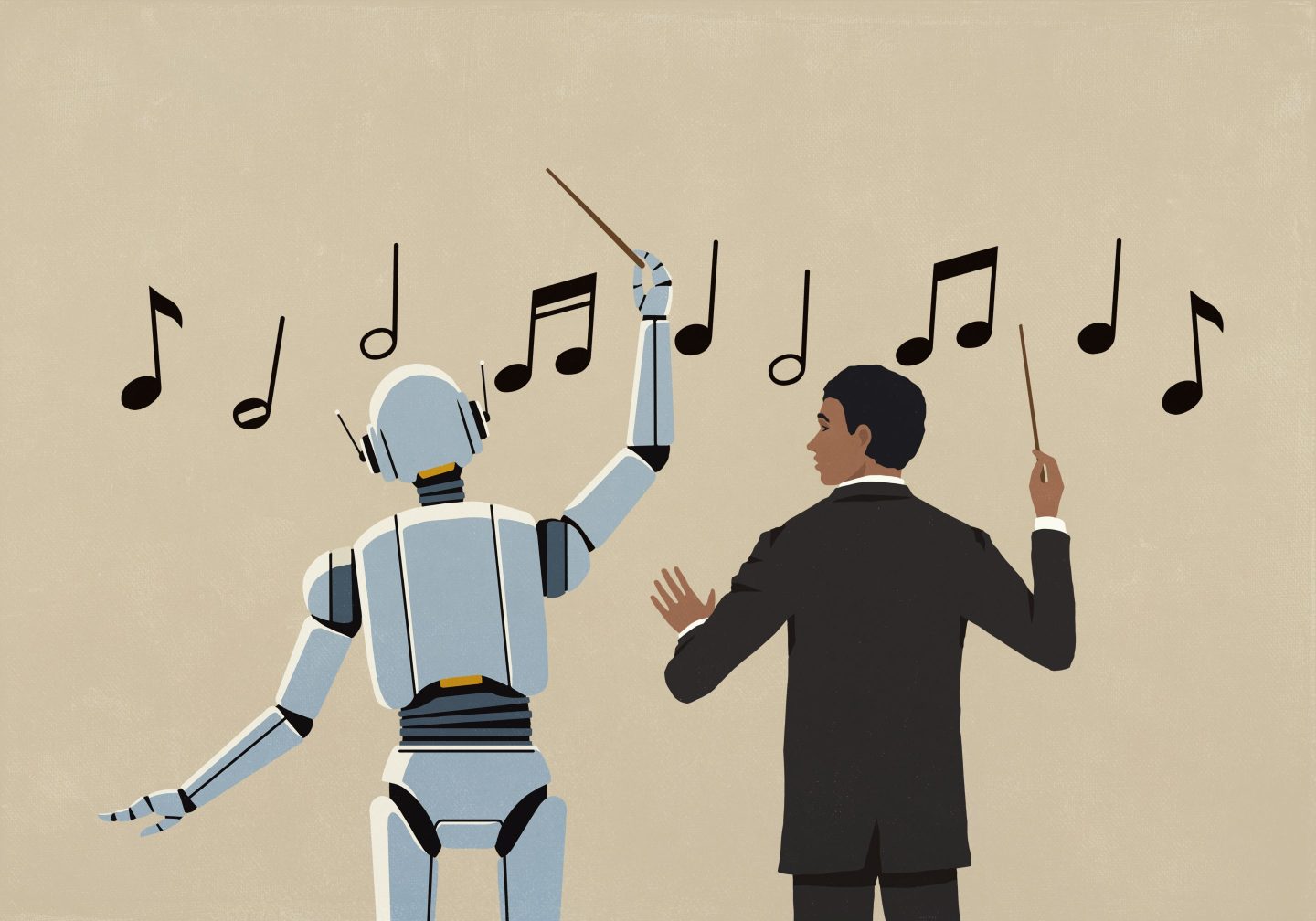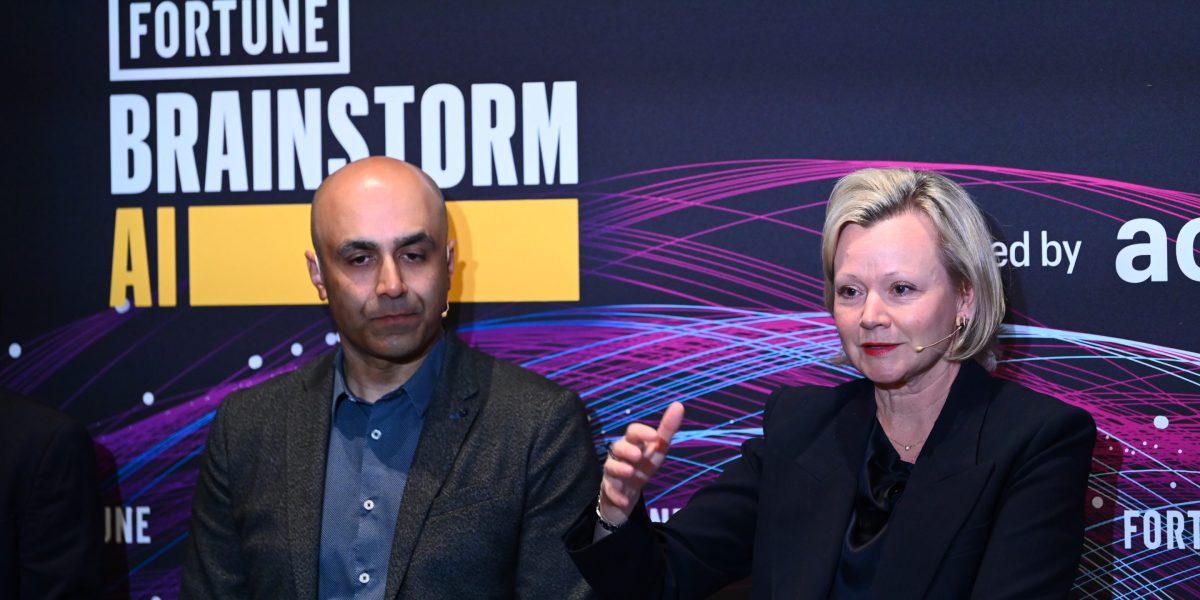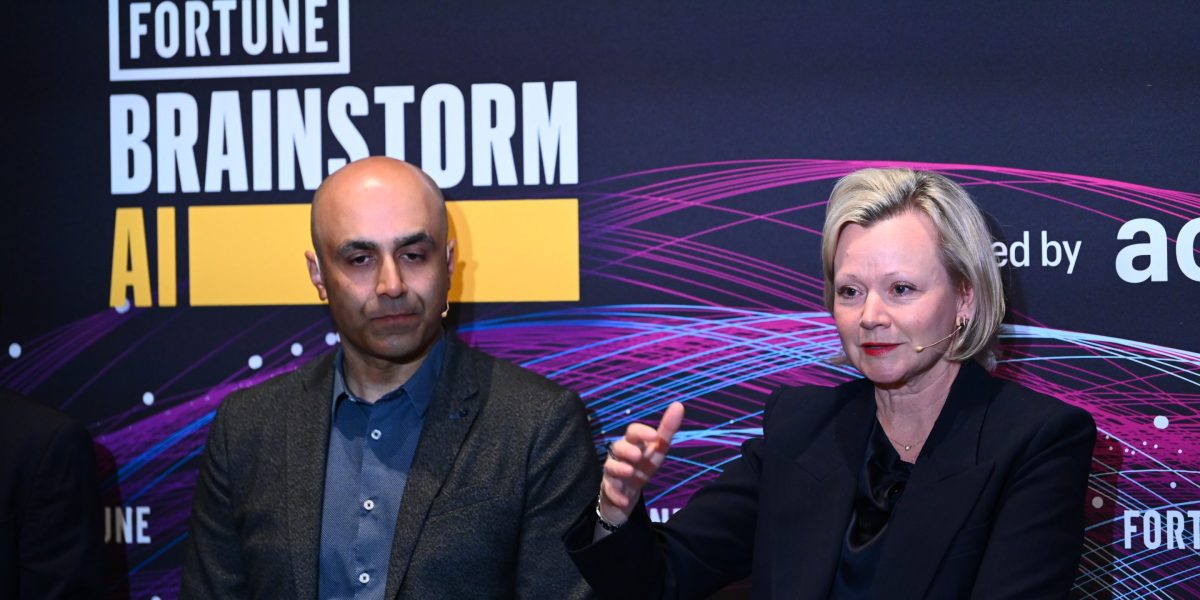The Great AI Talent Gap: Why Workers Are Struggling to Keep Up with Technology’s Lightning Pace
As we step into the era of artificial intelligence (AI), it’s clear that the pace of innovation is accelerating at an unprecedented rate. AI-powered tools are revolutionizing industries, automating tasks, and creating new opportunities for growth and efficiency. However, amidst this technological boom, a pressing concern is emerging: the skills gap. Workers are struggling to keep pace with the rapid advancements in AI, leaving many feeling left behind. A recent Fortune article highlights this alarming trend, stating that “workforce AI skills are advancing slowly as the technology zooms ahead.” Something has to give. In this article, we’ll delve into the root causes of this talent gap, its far-reaching consequences, and what can be done to bridge the divide between workers and the AI revolution.

Implications for Businesses and Leaders
As the technology landscape continues to evolve at a rapid pace, businesses and leaders are faced with the daunting task of keeping up with the latest advancements in AI. The business case for investing in AI skills development is clear: companies that fail to adapt risk being left behind by their more agile competitors. According to a recent report, the demand for AI skills is expected to increase by 34% over the next five years, with the greatest demand coming from the tech and finance sectors.

The Business Case for Investing in AI Skills Development
Investing in AI skills development is no longer a luxury, but a necessity for businesses looking to stay ahead of the curve. By developing the skills of their workforce, companies can improve productivity, enhance customer experience, and drive innovation. Moreover, companies that invest in AI skills development are more likely to attract and retain top talent, as employees are increasingly looking for opportunities to develop their skills and stay relevant in the job market.

Leadership Strategies for Navigating the AI-Driven Workplace
Leaders play a critical role in navigating the AI-driven workplace, and must develop strategies to effectively manage the integration of AI into their organizations. This includes identifying areas where AI can add value, developing a roadmap for implementation, and establishing clear goals and metrics for success. Leaders must also be prepared to address the ethical implications of AI, such as bias and job displacement, and develop strategies to mitigate these risks.

Fostering a Culture of Innovation and Continuous Learning

Practical Solutions for Upskilling and Reskilling
Upskilling and reskilling are critical components of any strategy to address the AI skills gap. Companies must develop practical solutions to help their workforce develop the skills they need to succeed in the AI-driven economy. This can be achieved through a variety of means, including online training programs, workshops and seminars, and on-the-job training.

Best Practices for Implementing AI Training Programs
When implementing AI training programs, companies should follow best practices to ensure success. This includes identifying clear goals and objectives, developing a comprehensive curriculum, and providing opportunities for hands-on practice and feedback. Companies should also encourage collaboration and knowledge-sharing among employees, and recognize and reward progress and achievement.

Leveraging AI Tools to Enhance Employee Development
AI tools can be leveraged to enhance employee development, by providing personalized learning recommendations, automating administrative tasks, and analyzing employee performance data. For example, AI-powered chatbots can be used to provide employees with personalized learning recommendations, while AI-powered analytics tools can be used to identify skills gaps and track employee progress.
Measuring the Effectiveness of AI Skills Initiatives
Measuring the effectiveness of AI skills initiatives is critical to ensuring that companies are getting a strong return on investment. This can be achieved through a variety of means, including tracking employee engagement and participation, monitoring progress and achievement, and conducting regular evaluations and assessments. Companies should also establish clear metrics and benchmarks for success, and use data and analytics to inform decision-making.
The Path Forward: Addressing the AI Skills Gap
Addressing the AI skills gap requires a collaborative effort from industry, education, and government. Companies must work together to develop comprehensive solutions to the AI skills gap, and share best practices and knowledge to drive progress and innovation. This can be achieved through a variety of means, including partnerships and collaborations, industry-wide initiatives, and government-funded programs.
Collaboration Between Industry, Education, and Government
Collaboration between industry, education, and government is critical to addressing the AI skills gap. Companies must work with educational institutions to develop curricula and training programs that meet the needs of the AI-driven economy. Governments must also provide funding and support for AI skills initiatives, and establish policies and regulations that encourage innovation and growth.
Harnessing the Potential of AI to Drive Growth and Innovation
AI has the potential to drive growth and innovation in a wide range of industries, from healthcare to finance to manufacturing. Companies must harness this potential by investing in AI research and development, developing new AI-powered products and services, and encouraging innovation and entrepreneurship.
Creating a Future-Ready Workforce: A Collective Responsibility
Creating a future-ready workforce is a collective responsibility that requires the efforts of industry, education, and government. Companies must take the lead in developing the skills of their workforce, while educational institutions must provide the foundation for future success. Governments must also provide the support and resources needed to drive progress and innovation. By working together, we can create a future-ready workforce that is equipped to succeed in the AI-driven economy.
Conclusion
In conclusion, the article “Workforce AI skills are advancing slowly as the technology zooms ahead. Something has to give – Fortune” sheds light on the significant challenges and implications of the rapidly evolving world of artificial intelligence (AI) and its impact on the workforce. Key points discussed include the slow advancement of AI skills among human employees, the mismatch between technological progress and workforce development, and the resulting challenges faced by businesses and individuals alike.
The topic’s significance lies in its potential to shape the future of work, forcing organizations to adapt and upskill their workforce to keep pace with AI advancements, as well as the need for governments and educational institutions to prioritize AI training and development programs. Moreover, the article highlights the societal implications, as the AI revolution impacts the job market, redefining roles, and potentially leading to job displacement for certain occupations.
Despite the challenges, the article also presents positive outlooks, emphasizing the opportunities presented by AI, such as the potential for increased efficiency, innovation, and the creation of new job roles. Furthermore, AI can help address critical global issues like climate change and healthcare.
Looking ahead, the advancement of AI skills will be essential for both individuals and organizations to stay competitive in the global economy. It is clear that the pace of AI development must align with workforce development, as the mismatch between the two only exacerbates the challenges faced by the workforce. Governments and educational institutions have a vital role to play in fostering a skilled workforce equipped to navigate the AI revolution.
In summary, the advancement of AI skills is critical for a smooth transition towards a future driven by technology. It is the responsibility of all stakeholders to ensure that the workforce adapts to this new reality, striking a balance between technological progress and workforce development to harness the full potential of AI for the betterment of society. As the world continues to evolve, this conversation must become a priority, transcending industries, governments, and educational institutions, as we navigate the future of work together.
